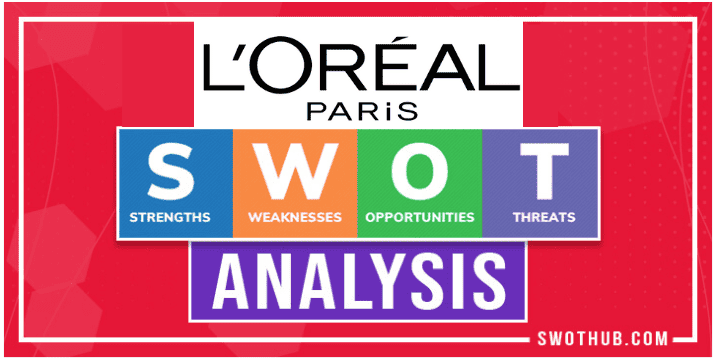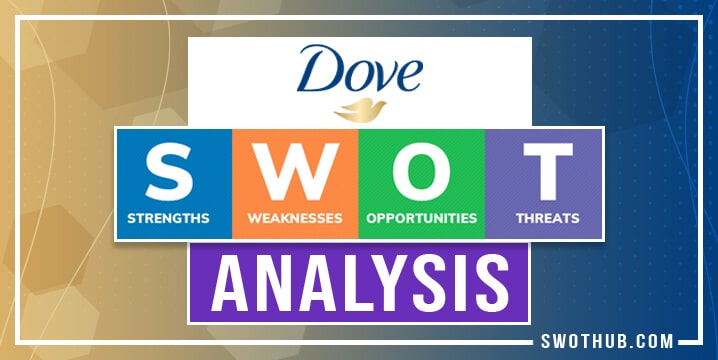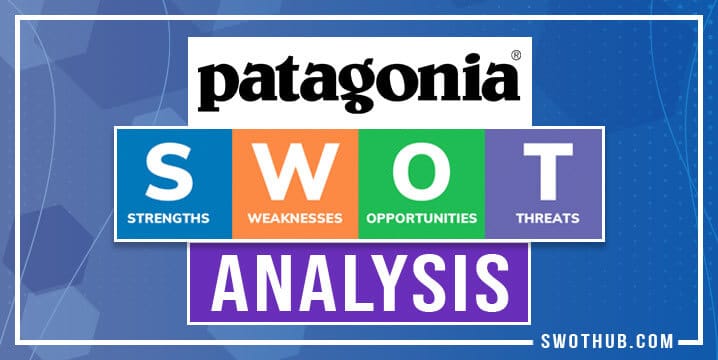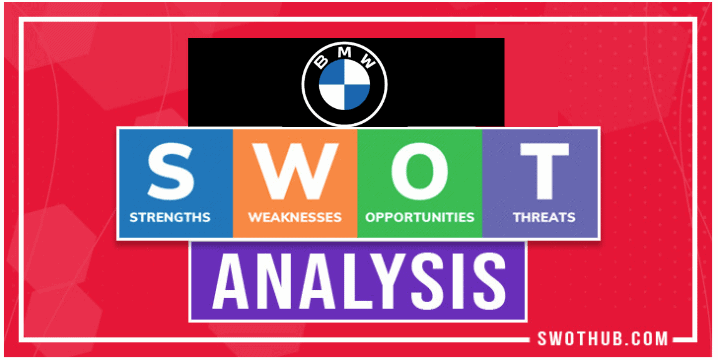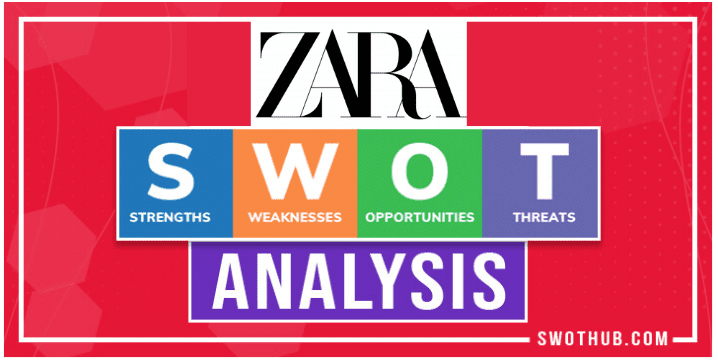In a LOreal SWOT analysis, we look at how L’Oreal dominates cosmetics and beauty. Business professionals and students can comprehend L’Oreal’s strengths, weaknesses, opportunities, and dangers. This essay will discuss L’Oreal’s history, why SWOT analysis is important, and how this legendary beauty brand fits into the industry.
Table of Contents
L’Oreal History
Eugène Schueller established L’Oreal in 1909 as a hair coloring business. By 2023, it’ll be a worldwide cosmetics powerhouse offering skincare, makeup, haircare, and fragrances. This trip depicts the beauty industry’s evolution over time.
The importance of understanding LOreal SWOT analysis A 360-degree picture of the company’s strengths, weaknesses, opportunities, and threats helps us understand its competitive landscape.
LOreal SWOT Analysis at a Glance
| Company | L’Oreal |
| Industry | Beauty/Cosmetics |
| Founder | Eugène Schueller |
| Year founded | 1909 |
| CEO | Nicolas Hieronimus |
| Headquarters | Clichy, France |
| Number of employees | 150,000 +/- (2022) |
| Revenue (FY 2022) | 30.85B EU |
The Importance of a LOreal SWOT Analysis
SWOT analysis reveals a company’s industry position. It helps firms exploit strengths, mitigate weaknesses, seize opportunities, and defend against dangers. Let’s examine each area to see why L’Oreal cares.
LOreal Strengths in SWOT Analysis
Strengths in a LOreal SWOT analysis refer to internal traits that provide a corporation with an advantage. These strengths are crucial for LOreal to determine how they compare with competitors.
L’Oreal’s products are sold in over 150 countries, making it a worldwide beauty leader.
Brand Diversity: L’Oreal’s portfolio includes Maybelline, Lancôme, and Garnier, boosting its resiliency.
Innovation Powerhouse: The company’s robust R&D investment in skincare and cosmetics keeps consumers hooked.
Sustainability: L’Oreal’s dedication to sustainability supports the ethical consumer trend and reduces its environmental footprint to mitigate long-term hazards.
Identifying organizational vulnerabilities is essential for strategic planning.
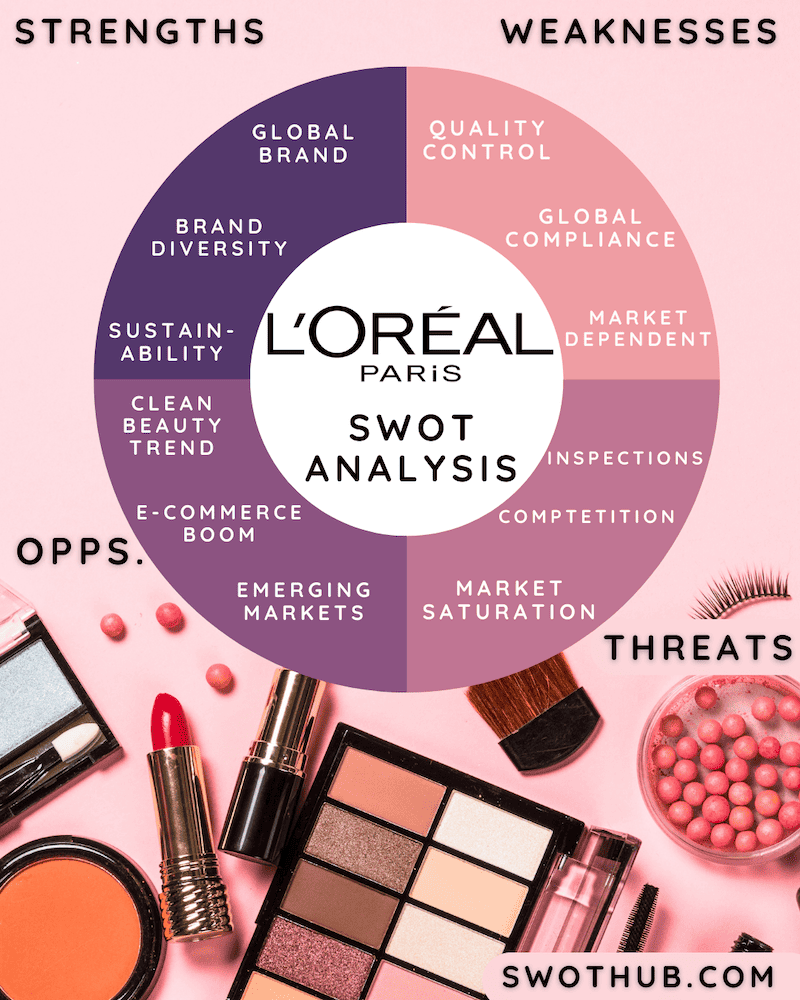
LOreal SWOT Analysis Weaknesses
Numerous companies fight for market share in the beauty sector, making it difficult.
Market Dependency: L’Oreal’s reliance on mature markets, notably Europe, makes it sensitive to economic swings.
Quality Control Issues: L’Oreal’s image has suffered from product recalls, highlighting the need for strict quality control.
Global Regulatory Compliance: Global regulations complicate product releases and compliance.
LOreal SWOT Analysis Opportunities:
The opportunities in a SWOT analysis are the external elements a corporation can use to its advantage. These opportunities matter to L’Oreal:
E-commerce Boom: L’Oreal can boost online sales and reach more customers with its booming e-commerce business.
Untapped Emerging Markets: Revenue growth is possible by entering growing Asian and African markets.
Clean Beauty Trend: Meeting demand for clean and natural goods might attract eco-conscious consumers.
Digital marketing dominance may transform customer engagement and brand loyalty.
SWOT Analysis of L’Oreal Threats
Threats are external variables that can harm an organization. Threats to L’Oreal are significant:
Counterfeit Products: The beauty business fights counterfeit products, which damage brand reputation and customer confidence.
Agile adaptation is needed to stay relevant and competitive as customer tastes and preferences change rapidly.
Supply Chain Disruptions: Global occurrences like the COVID-19 pandemic highlight supply chain fragility, necessitating strong contingency measures.
Environmental inspection: Environmental inspection of product materials and packaging increases sustainability and reputation hazards.
L’Oreal Competitors:
As a major player in the global beauty market, L’Oreal faces intense rivalry in the cosmetics sector. Four of its main rivals are listed below, along with certain benefits they have:
- Estée Lauder Companies, Inc.: Estée Lauder is a strong rival recognized for its upscale skincare, cosmetics, and fragrance brands. Its brand lineup is impressive and includes Clinique, MAC, and Bobbi Brown. The luxury positioning of Estée Lauder, which appeals to a more affluent client base, is in its favor. It has a substantial position in the premium skincare market as well, which has shown constant expansion.
- Procter & Gamble (P&G): Olay, SK-II, and Pantene are among P&G’s well-known beauty brands. P&G is a major player in the consumer goods industry. It has an advantage over L’Oreal due to its vast product selection, which includes cosmetics, skincare, and haircare products. P&G’s position as a key rival is further cemented by its extensive distribution network and excellent brand recognition.
- Johnson & Johnson: Neutrogena and Aveeno are competitors in the skincare market for Johnson & Johnson, a firm that focuses mostly on healthcare. Consumers looking for dermatological remedies can trust J&J because of its reputation for gentle, dermatologist-recommended products.
- Coty Inc.: Coty is well-known for its cosmetics and fragrance brands, including CoverGirl, Calvin Klein, and Rimmel London. The advantage of Coty is that it targets consumers who are cost-conscious with its emphasis on affordable beauty goods. Additionally, it has increased the number of brands in its portfolio through partnerships and the acquisition of Kylie Cosmetics.
These rivals provide a variety of benefits over L’Oreal, including luxury positioning, broad product ranges, dependable dermatological remedies, and cost-effective alternatives. To preserve its competitive edge in the fast-paced cosmetics sector, L’Oreal must consistently innovate, adjust to changing consumer preferences, and capitalize on its own strengths, such as a sizable global presence and a dedication to sustainability.
L’Oreal SWOT Analysis Conclusions and Recommendations
A complete SWOT analysis is essential for understanding L’Oreal’s competitive environment in the fast-changing beauty sector.
- E-Commerce: Take advantage of the burgeoning e-commerce sector to reach digital-savvy consumers.
- Global Expansion Plan: Consider strategic growth into new areas to diversify revenue.
- Quality Assurance: Improve quality control to avoid product recalls and maintain brand reputation.
FAQs for LOreal SWOT Analysis
What are the challenges facing Loreal?
L’Oreal must contend with issues like environmental scrutiny, supply chain interruptions, altering consumer preferences, and counterfeit products. These shifting obstacles necessitate ongoing awareness and adaptability.
What are the weaknesses of L’Oreal?
L’Oreal’s weaknesses include managing many international rules as well as severe industry competition, market dependence on mature countries, and difficulties with quality control.
What is a SWOT analysis for cosmetics?
A SWOT analysis of the cosmetics industry looks at the sector’s strengths, weaknesses, opportunities, and threats. It facilitates strategic planning and decision-making by assisting in the evaluation of a cosmetic company’s competitive position.
L’Oreal’s SWOT analysis offers a comprehensive view of a company deeply ingrained in the beauty industry’s fabric. Understanding the significance of each element in the SWOT matrix equips us with insights that not only elucidate L’Oreal’s current positioning but also provide a roadmap for its future success. By leveraging strengths, addressing weaknesses, seizing opportunities, and mitigating threats, L’Oreal can continue to captivate the hearts and faces of consumers worldwide while maintaining its role as a trailblazer in the realm of beauty.

